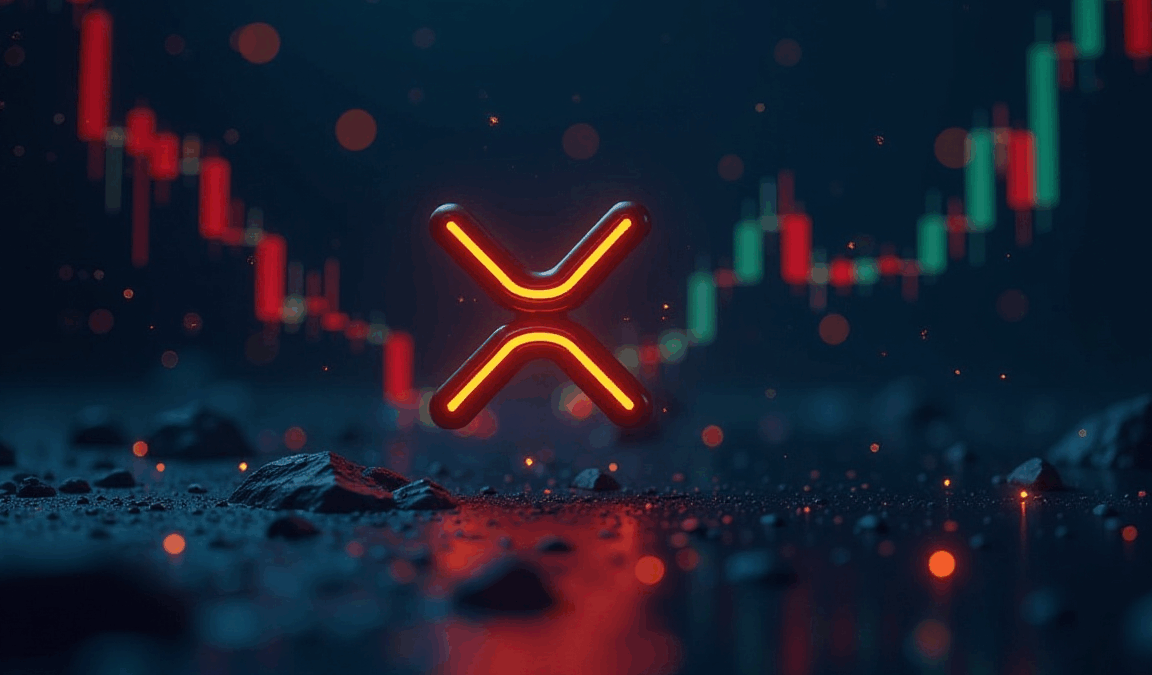Evolving ETH futures data hints a potential rally to $5K
Introduction
Ethereum, the second-largest cryptocurrency by market capitalization, is once again capturing the attention of investors across the globe. As the broader crypto market moves sideways and consolidates, Ethereum stands out due to its robust blockchain infrastructure, ongoing development milestones, and increasing institutional adoption. Though short-term fluctuations can shake out weaker hands, more seasoned investors and traders understand that volatility often precedes explosive growth. To fully grasp Ethereum’s near-term potential, one needs to go beyond price charts and examine deeper indicators—specifically, Ethereum futures data, which offers unique insights into market sentiment and trader positioning beneath the surface-level noise.
In today’s digital asset environment, data is often the difference between reacting emotionally and investing strategically. Futures markets, though often overlooked by retail investors, serve as a forecasting tool for what may lie ahead. By analyzing key metrics such as open interest, funding rates, and futures term structure, crypto traders can unveil trends that traditional technical analysis may not capture. This article will explore how Ethereum’s recent correction, juxtaposed with futures data, could actually be setting the stage for a powerful upward move that few are prepared for—but savvy investors are already pricing in.
ETH Price Correction: A Strategic Setup?
The beginning of the week brought about a noticeable pullback in Ethereum’s price, dipping below key support levels after previously rallying to nearly $3,800. For many, this renewed skepticism about whether the market was poised for a deeper correction. However, within the world of technical and market structure analysis, such retracements are not only natural but often healthy. They present strategic buying opportunities for those who are guided by data rather than emotion. Smart money understands that corrections serve to shake out over-leveraged positions and consolidate gains before a strong continuation move.
Several factors contributed to this latest dip: macroeconomic uncertainty, fluctuations in U.S. Treasury yields, a slight slowdown in smart contract activity, and reduced participation in NFT trading volumes. While these elements may give off bearish vibes, they don’t represent inherent problems with Ethereum’s long-term thesis or ecosystem. In fact, these headwinds are largely symptomatic of broader market sentiment and don’t reflect Ethereum-specific fundamental weakness.
Sometimes, the most powerful signals are those hiding in plain sight. Ethereum futures data—the aggregated expectations of thousands of traders—is one of them. By examining these derivatives-based metrics, we can uncover what the most well-capitalized and best-informed market participants are positioning for. And right now, the data paints an optimistic narrative that goes far beyond recent price declines.
ETH Futures Data: Signals You Shouldn’t Ignore
Ethereum futures trading—available on both traditional heavyweights like the Chicago Mercantile Exchange (CME) and decentralized platforms such as dYdX and GMX—offers a powerful lens into trader sentiment. Looking at current futures data, several notable patterns emerge that savvy investors should not overlook.
First, open interest (OI) in ETH futures has been on a steady incline, even while the spot price has pulled back. Rising OI in a declining market is a counterintuitive but bullish signal. It reflects that more traders are entering the market with long positions rather than exiting in fear. This indicates a phase of accumulation rather than capitulation. Rather than panic-selling, sophisticated investors are building positions in anticipation of a larger move.
Second, funding rates remain largely neutral to slightly positive across major exchanges. In highly speculative environments, surging funding rates often signal the presence of retail-driven euphoria and excessive leverage, typically followed by sharp corrections. In contrast, the current subdued funding rates suggest a more measured and institutional tone. This kind of accumulation doesn’t have the fingerprints of meme coin chasers or retail FOMO—it’s the work of disciplined actors optimizing entries based on long-term expectations.
Arguably the most interesting signal is the Ethereum futures term structure. In futures markets, prices of longer-dated contracts are expected to be higher than short-dated ones in a bullish trend—a condition called “contango.” However, recent data shows a flattening or even slight backwardation (inversion) of the curve, which means that short-dated contracts are priced higher than long-dated ones. Paradoxically, this often reflects bullish sentiment among long-term participants. Why? Because such structures may indicate traders expect a near-term surge in ETH price, one that’s not yet priced into longer-term contracts.
This present sentiment differs from earlier Ethereum bull cycles that were driven predominantly by hype around DeFi and NFT narratives. Today, the foundation is broader and more substantial. Institutional investors are reallocating capital into Ethereum, betting on its scalability upgrades, stronger economic design via EIP-1559, and critical developments such as the upcoming Dencun upgrade. Moreover, Ethereum is at the forefront of tokenizing real-world assets (RWAs), stablecoin infrastructure, and institutional staking services—key components of the future financial system based on the blockchain economy.
Investor Implications: Learning to Read the Tape
When retail investors think of futures, they often conjure up images of reckless margin trading and sudden liquidations. While misuse exists, professional traders use these markets to protect downside risk and uncover meaningful data points ahead of the curve. Successful investors adopt what’s known as tape reading—the practice of interpreting volume, positioning, and sentiment data to understand what’s truly happening beneath the surface of price action.
Today’s Ethereum futures data provides a goldmine of strategic insights. With publicly available platforms like Coinglass, Laevitas, and exchange-native dashboards such as Binance Futures, retail investors now have unprecedented access to the same metrics used by hedge funds and institutional desks looking for smart entry and exit points.
Here are three key takeaways that traders and holders alike can deploy to navigate market uncertainty more effectively:
- Funding Rates: Persistent but moderate positive funding rates during a flat or gradually climbing market signal a bullish bias without speculative overconfidence. Watch for sustainable funding levels as they confirm healthier market participation.
- Open Interest vs. Price Action: If open interest rises while ETH’s spot price drifts downward or consolidates, it suggests buyers are quietly accumulating, expecting a reversal. This divergence is a strong leading indicator for future breakouts.
- Term Structure Cues: Flattened or inverted futures curves may appear bearish at first glance, but they often indicate that smart money is anticipating a near-term spike in volatility and upward price movement. These subtle shifts reflect forward-looking optimism rather than fear.
This analytical approach mirrors the thinking of the Contrarian Investor: those who pay attention to data, not headlines, often position themselves ahead of the crowd. In a market that punishes emotional decisions, data-driven conviction becomes the ultimate edge. Ethereum’s futures signals are increasingly aligning with a coordinated accumulation phase led by institutional capital, not the dramatics of mainstream media narratives.
Conclusion
While the recent Ethereum price pullback may have rattled newer investors, the deeper story lies within the futures markets. Far from indicating widespread panic, these derivative indicators tell a vastly different story—one of strategic accumulation, institutional participation, and forward-looking confidence. The convergence of futures data with Ethereum’s robust technological development and expanding utility positions it uniquely for the next leg up.
With growing adoption across decentralized finance, real-world asset tokenization, and enterprise staking platforms, Ethereum continues to affirm its role as the backbone of the decentralized economy. And as derivatives traders quietly increase their exposure, the underlying sentiment is one of anticipation—not anxiety.
In an environment where headlines chase price action, savvy investors look underneath—into futures data, on-chain metrics, and structural upgrades—to understand what’s truly unfolding. As the market repositions and investors refine their strategies, we may be witnessing the early construction of Ethereum’s next major move toward the $5,000 threshold.
Those who read the tape—not just the news—will be the ones most prepared for what’s to come in this ongoing bull market.







